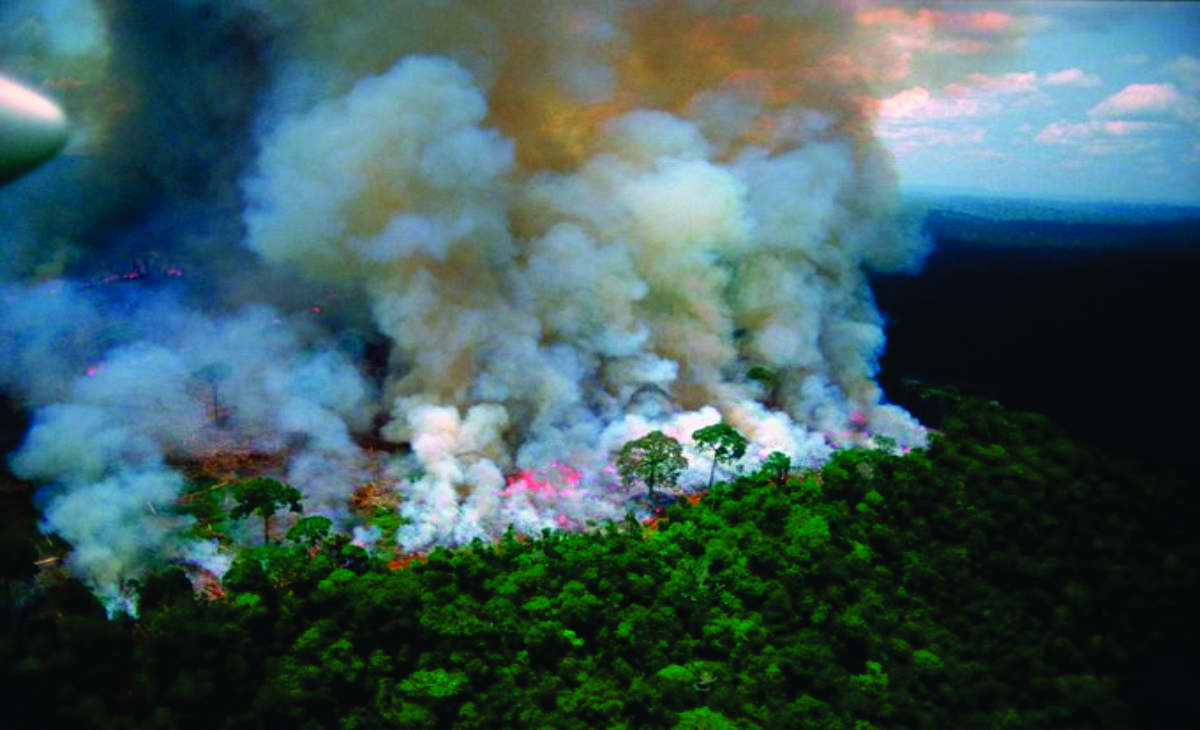Wildfires are burning around the world
Published on: 29-Aug-2019, 11:59 AM
Wildfires are burning around the world The most alarming is in the Amazon rainforest
An alarming cluster of wildfires are now burning in the Amazon rainforest and are threatening to disrupt international negotiations. French President Emmanuel Macron on Friday laid the blame for the Amazon fires on Brazilian President Jair Bolsonaro, calling the blazes an “international crisis” and promising to bring it up at the G7 summit this weekend.
The Amazon rainforest is the world’s largest tropical forest. It’s an area with torrential rain that almost never burns on its own, yet the blazes have burned for more than two weeks, growing so intense that they sent smoke all the way to São Paulo, Brazil’s largest city.
The state of Amazonas has declared an emergency. The #PrayforAmazonia tag has surged on social media as users blamed darkened skies above São Paulo on the fires, though some meteorologists said the low clouds were a normal weather phenomenon.
But the Amazon is not the only region that’s burning. More than 21,000 square miles of forest have gone up in flames in Siberia this month, putting Russia on track for its worst year on record for wildfires. The smoke from these blazes shrouded large parts of the country, including major cities like Novosibirsk, and has crossed the Pacific Ocean into the United States.
On Monday, a wildfire in the Canary Islands forced more than 8,000 people to flee. Over the weekend, new fires ignited in Alaska, extending what’s already been an unusually long fire season for the state. Last week, Denmark dispatched firefighters to Greenland combat a wildfire approaching inhabited areas. If not extinguished, officials are worried the blaze would burn through the winter, further driving up the already massive ice melt Greenland has experienced this year amid record heat.
California, which suffered its most destructive wildfire season on record in 2018, is having a much calmer year by comparison, although the potential for a major fire remains.
Many of these wildfires stem from unprecedented warmth and dryness across many parts of the world this year. And in the case of the Amazon, they are an unmistakable sign of how humans are radically reshaping the planet.
Conditions were ripe for major fires this year. The National Oceanic and Atmospheric Administration reported last week that this past July was the hottest July on record. The next five hottest Julys were all in the past five years.
This is not just for the northern hemisphere, where it’s summer right now, but for the whole world. The average global temperature last month was 1.71 degrees Fahrenheit above the 20th century average.
It may not seem like much, but remember that this is an average, which can obscure the extremes. And there were plenty of extremes last month.
The Netherlands, Germany, and Belgium set temperature records. Paris recorded its highest temperature ever, 108.6 degrees Fahrenheit. Parts of Poland, the Czech Republic, and Spain also experienced unprecedented high temperatures. Huge swaths of the United States also baked in a heat wave last month, with minimum temperatures approaching or breaking records.
So it’s not too surprising that many of the areas burning right now experienced extreme heat last month: Siberia, Alaska, the Canary Islands.
Alaska and the Canary Islands have also dealt with severe drought this year. In May, Alaska reported “extreme” drought conditions, the first time such a rating was recorded for the state, according to the US Drought Monitor.
These conditions have long been known to exacerbate wildfires. High heat and low moisture means vegetation dries out. But people play a critical role too.
Humans make wildfires worse. In the Amazon, humans are the underlying cause.
In many ecosystems, wildfires are a natural and essential phenomenon. They clear out decaying brush, restore nutrients to soil, and even help plants germinate. But in recent years, humans have made the destruction from wildfires worse at every step. Suppression of natural fires has allowed dry vegetation to accumulate. Human activity is changing the climate, which is forcing some forests to heat up and dry out. People are building ever closer to areas ready to ignite. And people end up igniting the majority of wildfires, whether through downed power lines, errant sparks, or arson.
But the Amazon rainforest, which remains drenched for much of the year, does not burn naturally. Instead, the fires are ignited by people. Farmers use slash-and-burn tactics to clear land for farming and pasture, though it’s illegal in Brazil this time of year due to fire risk.
Illegal logging operations in Brazil have also been known to start fires as a tactic to drive indigenous people off their land and to cover their tracks. The Amazon rainforest has experienced a record number of fires this year, with more than 74,000 reported so far. It’s an 84 percent increase over the number of wildfires at the same time last year.
“There is nothing abnormal about the climate this year or the rainfall in the Amazon region, which is just a little below average,” Alberto Setzer, a researcher at Brazil’s National Institute for Space Research (INPE), told Reuters. “The dry season creates the favorable conditions for the use and spread of fire, but starting a fire is the work of humans, either deliberately or by accident.”
Source: https://www.vox.com/world/2019/8/20/20813786/wildfire-amazon-rainforest-brazil-siberia


